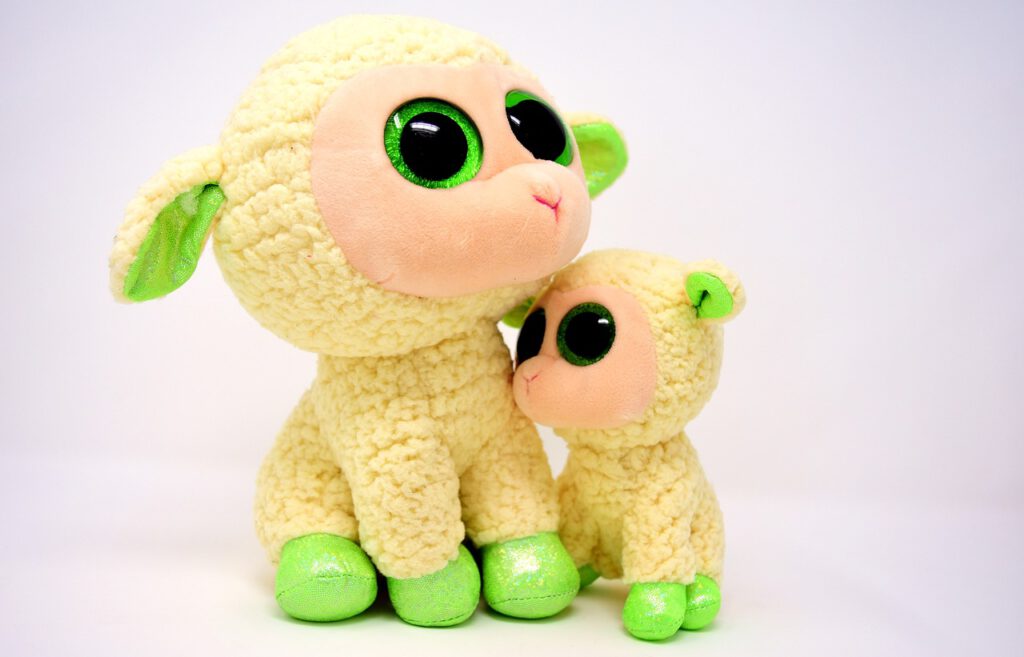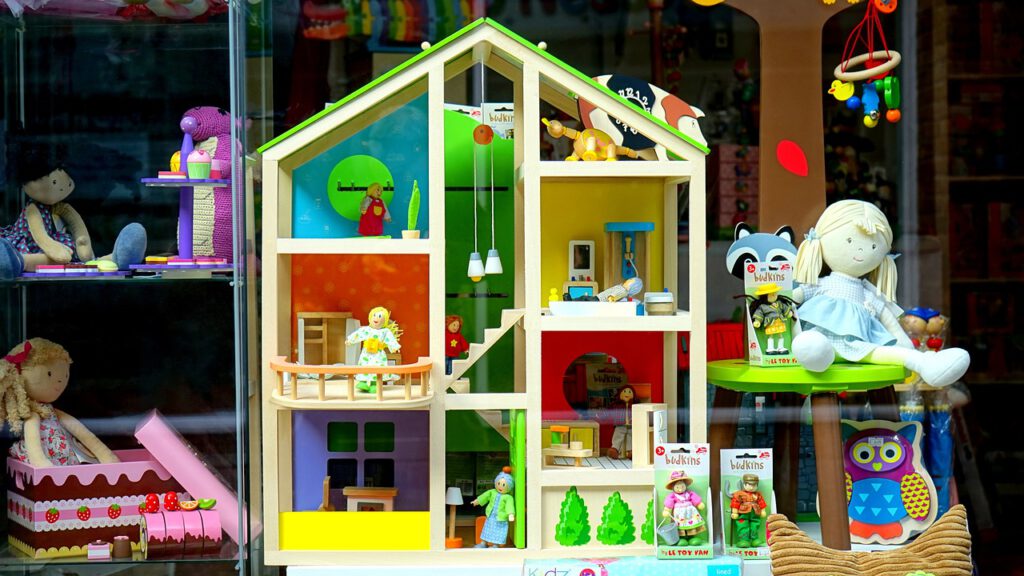In the age of mass production and digital entertainment, there lies a timeless charm in the simplicity and warmth of handmade toys. These creations, born from the hands of skilled artisans, carry a piece of the creator’s heart and soul, making them treasures that transcend generations. If you sew, knit, or crochet, the world of handmade toys offers a golden opportunity not only to share your craft but also to build a sustainable and rewarding business. This article will guide you through the journey of creating, marketing, and selling handmade toys, transforming your passion into a thriving enterprise.
The Allure of Handmade Toys
Handmade toys are more than just playthings; they are symbols of love, creativity, and tradition. Each stitch, each knot, and each piece of fabric tells a story, making these toys unique and cherished. In a world where parents are increasingly concerned about the environmental impact and safety of the products they buy for their children, handmade toys stand out for their quality, sustainability, and personal touch.
Why Handmade Toys?
- Quality and Craftsmanship: Handmade toys are crafted with care and attention to detail, ensuring durability and safety.
- Sustainability: Using eco-friendly materials and sustainable practices, handmade toys appeal to environmentally conscious consumers.
- Personalization: Customizable to fit specific themes or preferences, handmade toys can be tailored to create unique, one-of-a-kind pieces.
- Nostalgia: Handmade toys often evoke a sense of nostalgia, appealing not only to children but also to adults who cherish memories of their childhood.
Crafting Your Handmade Toys: From Concept to Creation
Creating handmade toys requires a blend of creativity, skill, and an understanding of current trends. Whether you are following popular patterns or designing custom pieces, the process of crafting these toys is both an art and a science.
Researching Trends
To stay relevant and competitive, it’s crucial to keep an eye on current trends in the toy industry. Platforms like Etsy, Pinterest, and Facebook groups dedicated to handmade crafts are excellent resources for trend spotting. Additionally, industry reports and surveys, such as those from The Toy Association, provide valuable insights into consumer preferences and emerging trends.
Designing and Crafting
- Follow Trends: Identify popular themes and patterns that resonate with your target audience. For instance, mystical and magical themes are currently trending, driven by cultural interests in fantasy genres.
- Custom Creations: Offer bespoke toys tailored to specific nursery themes or children’s preferences. Custom orders allow you to charge a premium price and cater to a niche market.
- Nostalgic Gifts: Consider creating toys that appeal to adults, such as replicas of classic toys or designs inspired by popular culture. The growing market for “kidults” (adults who enjoy toys) presents a lucrative opportunity.
Materials and Techniques
Choosing the right materials and techniques is essential for creating high-quality handmade toys. Opt for eco-friendly and non-toxic materials to appeal to environmentally conscious consumers. Techniques such as sewing, knitting, and crocheting allow for intricate designs and durable products.
Building Your Handmade Toy Business
Turning your passion for crafting into a successful business involves strategic planning, effective marketing, and a deep understanding of your target market.
Identifying Your Niche
Finding a niche is crucial for standing out in the crowded handmade toy market. Specializing in a specific type of toy or theme allows you to become an expert in that area and attract a dedicated customer base.
- Narrow Down Your Focus: Instead of offering a wide range of toys, focus on a specific category, such as wooden animal toys or personalized plushies.
- Research Your Market: Understand the needs and preferences of your target audience. Conduct surveys, engage with potential customers on social media, and analyze competitors to identify gaps in the market.


Pricing Your Products
Pricing handmade toys can be challenging, but it’s essential to strike a balance between covering your costs and offering competitive prices. Consider the following strategies:
- Cost-Based Pricing: Calculate the cost of materials, labor, and overheads, and add a markup to determine your selling price.
- Value-Based Pricing: Price your toys based on the perceived value to the customer. Custom and high-quality toys can command higher prices.
- Competitive Analysis: Research how similar products are priced in the market and adjust your prices accordingly.
Marketing and Selling Handmade Toys
Effective marketing is key to reaching a wider audience and driving sales. Utilize a mix of online and offline strategies to promote your handmade toys.
Online Platforms
- Etsy: As one of the largest marketplaces for handmade products, Etsy is an ideal platform for selling handmade toys. Optimize your product listings with high-quality images, detailed descriptions, and relevant keywords to improve visibility.
- Amazon Handmade: Another excellent platform for reaching a broad audience, Amazon Handmade allows you to leverage Amazon’s vast customer base.
- Shopify: Create your own online store with Shopify to have full control over your brand and customer experience.
Social Media Marketing
Social media platforms like Instagram, Facebook, and Pinterest are powerful tools for promoting handmade toys. Use these platforms to showcase your products, engage with your audience, and drive traffic to your online store.
- Visual Content: Share high-quality images and videos of your toys in various settings. Use filters and editing tools to enhance the aesthetics.
- Engagement: Respond promptly to comments and messages, and engage with your followers by sharing behind-the-scenes content and hosting giveaways.
- Influencer Collaborations: Partner with influencers and bloggers in the craft and toy niche to reach a larger audience and gain credibility.
Community Engagement
Building a community around your brand can foster loyalty and drive word-of-mouth marketing.
- Craft Fairs and Markets: Participate in local craft fairs and markets to showcase your toys and connect with potential customers.
- Workshops and Events: Host workshops and events to demonstrate your crafting process and engage with your audience.
- Customer Reviews: Encourage satisfied customers to leave reviews and testimonials to build trust and credibility.
Navigating Challenges and Ensuring Success
Building a successful handmade toy business comes with its share of challenges. Here are some common obstacles and strategies to overcome them:
Managing Production and Inventory
Balancing production and inventory is crucial to meet demand without overextending yourself.
- Efficient Production: Streamline your production process by organizing your workspace, using efficient techniques, and managing your time effectively.
- Inventory Management: Keep track of your inventory to ensure you have enough stock to meet demand, especially during peak seasons.
Handling Custom Orders
Custom orders can be lucrative but also challenging to manage.
- Clear Communication: Ensure clear communication with customers regarding their requirements and timelines.
- Deposits: Require a deposit to cover the cost of materials before starting a custom order to protect yourself from cancellations.
Staying Competitive
The handmade toy market is competitive, so it’s essential to continually innovate and stay ahead of trends.
- Continuous Learning: Stay updated with the latest trends, techniques, and materials in the toy industry.
- Customer Feedback: Regularly seek feedback from customers to improve your products and services.


The Future of Handmade Toys
The handmade toy industry is evolving, with new trends and opportunities emerging. Here are some trends to watch:
Sustainability
As consumers become more environmentally conscious, the demand for sustainable and eco-friendly toys is increasing. Using natural materials and sustainable practices can set your brand apart.
Technology Integration
While handmade toys are often associated with traditional craftsmanship, integrating technology can create unique and innovative products. Consider incorporating elements like LED lights or interactive features to enhance the play experience.
Personalization
The trend towards personalized and custom products continues to grow. Offering customizable options allows you to cater to individual preferences and create unique, one-of-a-kind toys.
Conclusion: Crafting a Legacy
Creating and selling handmade toys is more than just a business; it’s a way to share your passion and creativity with the world. By focusing on quality, sustainability, and personalization, you can build a brand that resonates with customers and stands the test of time.As you embark on this journey, remember that success comes from a combination of skill, strategy, and perseverance. Stay true to your craft, continually innovate, and engage with your audience to build a thriving handmade toy business.Your handmade toys are not just products; they are pieces of art, crafted with love and care. They have the power to bring joy to children and adults alike, creating memories that will last a lifetime. So, take that first step, and let your creativity shine. The world is waiting for the unique and beautiful toys that only you can create.